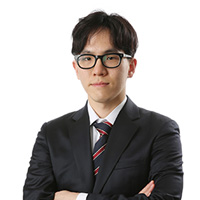Machine Visions: Trevor Paglen’s exhibition querying how machine sees the world
By Shim Woo-hyunPublished : Nov. 3, 2019 - 17:09
The recent rise of machine and computer vision systems not just allow machines to actually see things, but also automatically and seamlessly collects and interprets images for various purposes. An upcoming Seoul exhibition will delve into such technologies and the potential they may hold in understanding today’s world.
“Throughout history, images have needed somebody to look at and interpret them. But, that’s changing now. With things like computer visions, we can now build machines that look at images for us. Most of the scrutiny of images in the world now in general is being done by machines, not by humans,” Trevor Paglen said.
Nam June Paik Art Center is holding the first solo exhibition of Paglen, a Berlin-based US artist who won 2018 Nam June Paik Art Center Prize.
“Throughout history, images have needed somebody to look at and interpret them. But, that’s changing now. With things like computer visions, we can now build machines that look at images for us. Most of the scrutiny of images in the world now in general is being done by machines, not by humans,” Trevor Paglen said.
Nam June Paik Art Center is holding the first solo exhibition of Paglen, a Berlin-based US artist who won 2018 Nam June Paik Art Center Prize.

The exhibition, titled “Machine Visions” features a total of 19 works that use different mediums, from video, photographs to installation, which attempt to unveil the inner workings of technical systems and the unseen network empowering massive surveillance, as well as the political implications that are built into the infrastructure.
“The way I look at technologies is that they are tools that are not neutral. Every kind of technology has an inbuilt vision of a society, and it creates that society. If you think about something like nuclear weapons, that’s a technology that has a vision of world order that is required in order for it to exist and creates that world order because it exists. I think all technologies are like that,” Paglen said.
According to the artist, it is important to understand how machine and computer vision systems work not because they are fun to play with, but more because they are crucial factors in understanding our world now.
For him, technologies are like “a pair of glasses” to see what changes they bring into the world and how they are reshaping the world around us, Paglen added.
There are several artworks that show how machine and computer vision systems see things, which differ from how humans view them.
The exhibition starts off with “Drone Vision” (2010), which offers a drone’s eye view from the perspective of a drone operator. Paglen says that drones are an important element in redefining vision and distance in the contemporary world.
“Image Operations. Op.10” (2018) is another work that presents how machines see things. In this video, visitors watch a string quartet playing the piece by Debussy. Yet, the performers are being examined by a lot of different computer visions and artificial intelligence algorithms that are used in guided missiles, self-driving cars, automated factories and also in social media platforms.
In his video work “Behold These Glorious Times!” (2017), the artist goes through a repository of images created by machines to train AI networks. Here, visitors see numerous images that are both produced and consumed only by machines -- with no human intervention involved.
The machines and algorithms now enable a planetary-scale data collection, yet most of the unseen network of power that monitors us often goes unnoticed, Paglen pointed out.
“Cameras are now trying to automatically identify who people are and monitor their actions. It’s done in social media platforms too. A few of your friends might like it, but in the background the images are being looked at by very powerful machine vision systems that are trying to understand something about you by looking at them,” Paglen says.

“NSA-Tapped Fiber Optic Cable Landing Site, Keawaula, Hawaii, United States” (2016) is one of Paglen’s coastal landscape photo. Yet, through his perfectly normal and peaceful setting, the artist suggests the presence of communication cables, which allow the massive data traffic flowing through them buried in the seabed, away from people’s sights.
“89 Landscapes” (2015) is another video consisting of scenes that he shot while participating as a cinematographer in “Citizenfour,” Laura Poitras’ documentary film about Edward Snowden. It show peaceful gorges where the surveillance systems are located, and the installations that support them, yet accompanied by unsettling sounds.
The exhibition runs through Feb. 2, 2020.
By Shim Woo-hyun (ws@heraldcorp.com)






![[Herald Interview] 'Trump will use tariffs as first line of defense for American manufacturing'](http://res.heraldm.com/phpwas/restmb_idxmake.php?idx=644&simg=/content/image/2024/11/26/20241126050017_0.jpg&u=20241126161719)
![[Exclusive] Hyundai Mobis eyes closer ties with BYD](http://res.heraldm.com/phpwas/restmb_idxmake.php?idx=644&simg=/content/image/2024/11/25/20241125050044_0.jpg&u=)
![[Herald Review] 'Gangnam B-Side' combines social realism with masterful suspense, performance](http://res.heraldm.com/phpwas/restmb_idxmake.php?idx=644&simg=/content/image/2024/11/25/20241125050072_0.jpg&u=)









![[Today’s K-pop] BTS’ Jin single hits Billboard’s Hot 100 at No. 53](http://res.heraldm.com/phpwas/restmb_idxmake.php?idx=642&simg=/content/image/2024/11/26/20241126050076_0.jpg&u=)